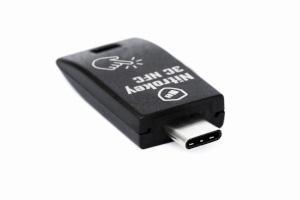Nitrokey 3 Test Firmware Mit Secure Element Support

Heute haben wir ein besonderes Test Firmware Release für den Nitrokey 3 veröffentlicht. Das Highlight ist die vollständige Integration des SE050 Secure Elements in die OpenPGP Card.
Mit dieser Firmware ist es jetzt möglich, das "Backend" für die kryptographischen Primitiven in der OpenPGP Card auszuwählen. Das bisherige Software-Backend bietet volle Transparenz durch einsehbaren Open-Source Quellcode, ermöglicht jedoch nur die Generierung von maximal RSA-2048 Schlüsseln auf dem Nitrokey 3. Längere RSA-Schlüssel können importiert, aber nicht generiert werden, da die Rechenkapazität des Mikrocontrollers beschränkt ist. Das SE050 Backend ermöglicht nun die Generierung von RSA-3072 und sogar RSA-4096 Schlüsseln, letztere in ungefähr einer Minute. Das Secure Element ist keine Open-Source-Hardware, so dass die Implementierungen der kryptographischen Primitiven nicht einsehbar ist, dafür bietet es jedoch zertifizierte Sicherheit nach FIPS 140-2 Security Level 3-4 und Common Criteria EAL 6+.
Zum Umschalten der Backends wird ein aktuelles pynitrokey benötigt. Damit lässt sich das SE050 Backend wie folgt einschalten:
nitropy nk3 set-config opcard.use_se050_backend trueBitte die angezeigten Nachrichten beachten. Beim Wechsel des Backends werden alle Daten der OpenPGP Card im vorherigen Backend unwiderruflich gelöscht. Da es sich um eine Test-Firmware handelt, empfehlen wir, vorsichtig zu sein und Sicherungskopien sensibler Daten anzulegen und es noch nicht produktiv zu nutzen. In Zukunft wird der Wechsel des Backends auch über die Nitrokey App 2 möglich sein, an der momentan intensiv gearbeitet wird.
Comments
Add new comment